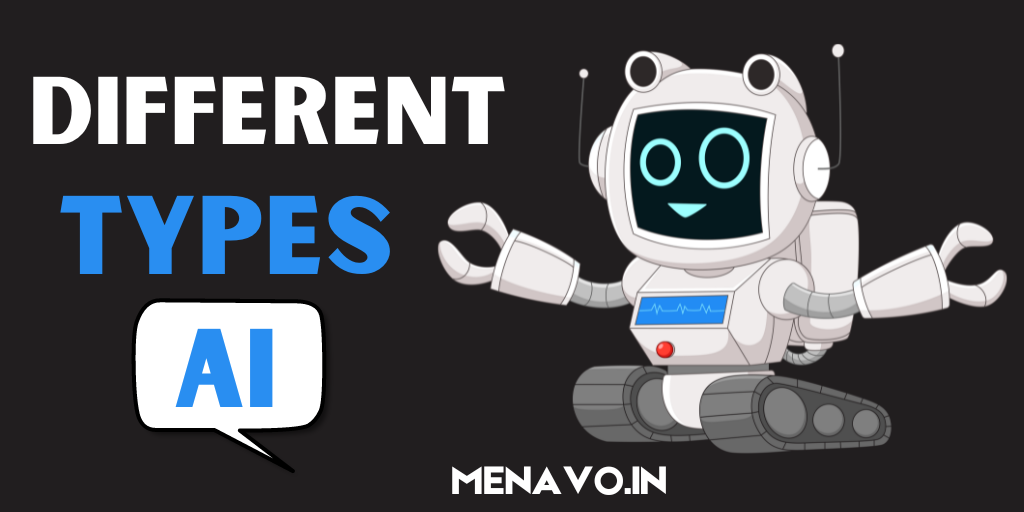Artificial Intelligence (AI) has become an integral part of modern technology, revolutionizing industries and changing the way we interact with machines. However, AI is not a one-size-fits-all concept; it encompasses various types and categories, each with its unique characteristics and applications. In this blog, we’ll explore the different types of AI and how they are shaping our world.

1. Narrow AI (Weak AI)
Narrow AI, also known as Weak AI, is designed to perform a specific task or a set of tasks. These systems are trained to excel in a particular area, such as facial recognition, voice assistants, or recommendation algorithms. They operate under limited constraints and cannot perform tasks outside their predefined capabilities.
Examples of Narrow AI:
- Siri and Alexa: Voice-activated virtual assistants that can perform tasks like setting reminders, playing music, or answering questions.
- Recommendation Systems: Algorithms used by platforms like Netflix and Amazon to suggest content or products based on user preferences.
2. General AI (Strong AI)
General AI, also referred to as Strong AI, is a more advanced form of artificial intelligence that can understand, learn, and apply knowledge across a wide range of tasks, much like a human being. Unlike Narrow AI, General AI possesses the ability to reason, plan, and adapt to new situations.
Key Characteristics of General AI:
- Human-like Understanding: The ability to comprehend complex concepts and contexts.
- Adaptability: Capable of learning and adjusting to new tasks without human intervention.
3. Supervised Learning
Supervised Learning is a type of AI where the model is trained on a labeled dataset, meaning that the input data comes with corresponding output labels. The model learns to map inputs to outputs by identifying patterns in the data.
Examples of Supervised Learning:
- Spam Detection: Identifying whether an email is spam or not based on labeled examples.
- Image Classification: Categorizing images into different classes, such as identifying whether a picture contains a cat or a dog.
4. Unsupervised Learning
In Unsupervised Learning, the AI model is given input data without any labeled outputs. The model’s goal is to discover hidden patterns or relationships within the data without explicit instructions on what to look for.
Examples of Unsupervised Learning:
- Customer Segmentation: Grouping customers into segments based on purchasing behavior.
- Anomaly Detection: Identifying unusual data points that do not fit the general pattern.
5. Reinforcement Learning
Reinforcement Learning is a type of AI where an agent learns to make decisions by interacting with its environment. The agent receives rewards or penalties based on its actions and adjusts its behavior to maximize the cumulative reward.
Examples of Reinforcement Learning:
- Autonomous Vehicles: Learning to navigate through traffic and avoid obstacles.
- Game Playing: AI systems like AlphaGo, which learned to play and master the game of Go by receiving rewards for winning moves.
6. Deep Learning
Deep Learning is a subset of machine learning that uses artificial neural networks to model complex patterns in large datasets. It is particularly effective in tasks such as image and speech recognition, where traditional machine learning methods may struggle.
Examples of Deep Learning:
- Image Recognition: Identifying objects, faces, or scenes within images.
- Natural Language Processing (NLP): Understanding and generating human language, such as in chatbots and translation services.
7. Generative AI
Generative AI refers to algorithms that can generate new content, such as text, images, or music, based on the patterns learned from existing data. These models can create realistic and coherent content, making them useful in creative industries.
Examples of Generative AI:
- GPT-4: A language model capable of generating human-like text based on a given prompt.
- DALL-E: A model that creates images from textual descriptions.
Conclusion
The world of AI is vast and varied, with different types of AI serving different purposes. From Narrow AI, which focuses on specific tasks, to the still-theoretical General AI, which aims to replicate human intelligence, each type plays a crucial role in the development of technology. Understanding these types of AI helps us appreciate the advancements in the field and the potential they hold for the future.